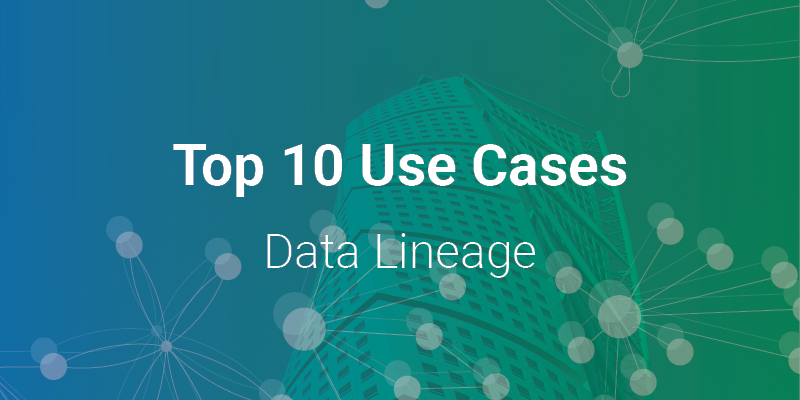Top 10 Use Cases: Data Lineage

Chief Scientist, Neo4j
1 min read

But how do companies today use graph databases to solve tough problems? In this blog series, we’ll cover the top 10 use cases for graph technology and for each we include a real-world example. This blog series continues with a look at using graph technology for data lineage.
Last week’s blog addressed how graph technology can form the base of efficient master data management. This eighth installment focuses on how financial institutions can use graph technology to meet their extensive data lineage challenges. Institutions face exacting requirements to track data through multiple data silos and this blog offers a use case from UBS on how graph technology can solve this problem.
Use Case #8: Data Lineage
Risk modeling is a multiplex of requirements. It also demands organizations – especially large banks, hedge funds and aggressive investment houses – to track data connections across a complex network of investments, holdings, financial instruments and granular pricing data.
Why Use Graph Technology for Data Lineage?
Banks and other regulated financial organizations like yours are required to trace data dependencies through many intricate levels before reaching original, authoritative data sources – a crucial underlying requirement most systems simply can’t address. Data lineage challenges stemming from stringent requirements like BCBS 239 require a lot more flexibility and persistence than traditional data storage systems offer.You’re required to backwards trace data through discrete data silos until its lineage ends with an authoritative source. Likewise, even though entities require standard identifiers, business groups often use their own terminology and algorithms – sometimes within the same organization.
The structure and location of data often makes it all but impossible to address in a single, centralized data store. And ironically, moving everything into a single repository may make tracing data lineage even more difficult.
Integrating information into a single, enterprise-wide logical data model requires graph technology. With a graph database, you get a single source of truth and complex or hidden data connections are queried and revealed within milliseconds.
Example: UBS
Sid Hannif, a Solution Architect at UBS, struggled with the hundreds of systems and siloed data he needed to join to make customer-use experiences seamless with up-to-date, realtime data.
“We’re supposed to provide timely, accurate and complete data, and here the consumer had to go and join the data themselves,” he said.
UBS has been around since 1854. There’s approximately 60,000 employees, and the financial enterprise is split into different divisions, covering wealth management, investment bank, asset management, a corporate center and data services.
With the data services group, Sid and his team look after 12 data domains and sub datasets, where the data is sent out over a number of channels. Account data lived in relational databases. The number of integrations were a big obstacle and the UBS customer reference data distribution platform was suffering as a result.
The data services team wanted to use metadata to have the engines interrogate how the data shaped, how it links with other data, and then do the joining. And, that’s exactly what a knowledge graph does as a subcomponent of the system.
From there, UBS chose Neo4j’s graph database to model their data. “The governance of data – moving from place to place – is a lot easier,” said Sid. “We understand who’s taking our data and through what channels. But more importantly, our consumers are able to understand what datasets we offer and how they relate to other ones.
Conclusion
With a graph database for privacy and risk reporting compliance, there are a number of beneficial outcomes traditional systems don’t offer:
- Trace the lineage of risk factors back to their original, authoritative data sources
- Span pricing, position, cash management and other data silos into a unified dataset
- Work with regulators to visualize and modify risk model graph diagrams
- Enable the easy modification of risk models to keep pace with changing market conditions, organizational changes and investment strategies
- Handle mergers, divestitures and reorganizations that affect the historical and future operation and performance of trading desks
The ninth and next blog in this series goes into the use case of identity and access management, and illustrates how graph technology can store complex connected access control structures across billions of parties and resources. .
Download My Free Copy







